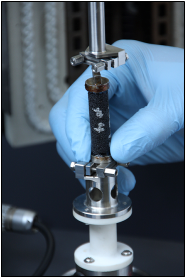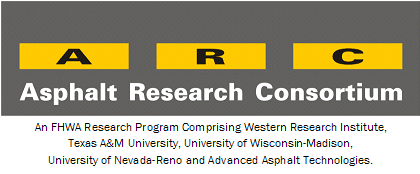|
Vol 5 Issue 3 December 2011 |
|
Researchers Investigating Fatigue Cracking in Mixtures Have Identified Material Properties Related to Healing Healing Characteristics Are Unique to the Material and Independent of the Mode of Loading
ARC researchers at the University of Texas-Austin have developed a framework to quantify healing as a material property Two decades of research at Texas A&M and elsewhere has demonstrated that the fatigue cracking resistance of an asphalt mixture cannot be fully characterized without
|

|
Compatibility of RAP and Virgin Binders The Bitumen Solubility Model Provides an Approach to Determining a Material’s Internal Stability When reclaimed asphalt pavement (RAP) is mixed with virgin asphalt and aggregate to build a new road, the virgin binder acts as a solvent of sorts that stimulates mixing with the RAP asphalt. The result is a new asphalt with unique properties. Determining how much the RAP and virgin asphalts blend in a RAP mix is a complex problem, with the degree of blending significantly affecting the asphalt properties of the RAP mix. Because of variables in binder compatibilities, particle sizes, mixing temperature, and time, complete blending of the RAP and virgin asphalts cannot be assumed. In the field, this incomplete mixing results in a mix that can be too stiff, too soft, or have other unpredicted properties. On the other hand, the degree of mixing, the fraction of RAP that is mobilized, and the compatibility of the recycled and virgin materials should be directly related. WRI has set out to determine the degree to which RAP and virgin binders blend and what effects the blending has on the resulting material properties. Click HERE for more. |
|
Healing characteristics of a FAM (asphalt mortar) specimen are measured using a cylindrical specimen with the dynamic shear rheometer.
|


|
To remove your name from our mailing list, please click here. Questions or comments? E-mail us at psebaaly@unr.edu or call 775-784-6565.
Please Visit the ARC website to find references and links to publications, presentations and other useful information. |
|
Asphalt Research Extended Through 2013 In July, 2011, the FHWA requested a proposal from the Asphalt Research Consortium (ARC) for a cost and time extension of the ARC Cooperative Agreement, which was set to conclude on March 31, 2012. The ARC proposed a 21-month work plan and budget in September, and a contract extension was awarded that continues the ARC through December 31, 2013. A final work plan and budget are being developed that will focus the Asphalt Research Consortium on technology products ranging from those under early development to those that have been completed and are under review by the American Association of State Highway and Transportation Officials (AASHTO). Adoption of new models, methods and other products by AASHTO on a provisional basis is the first step to becoming an AASHTO specification or method. As the ARC research progresses, products will be moved forward and new products will be added. The work plan can be viewed on the ARC website at www.arc.unr.edu, along with other information from the ARC. ARC
|
|
ARC Welcomes the Participation of NCAT Starting April 1, 2012, the National Center for Asphalt Technology (NCAT) will join the ARC research team. The NCAT role will be influential in the areas of field testing and validation of technologies developed by the Asphalt Research Consortium. For example, from April 2012 through December 2013, NCAT researchers will evaluate the construction of various projects containing RAP and WMA additives. The NCAT mobile laboratory will be present at 10 construction sites throughout the US to conduct evaluations of field-produced mixtures. NCAT researchers will evaluate the measured properties from the projects and incorporate the data into the ARC Materials Database for use in validating ARC technologies. The National Center for Asphalt Technology was created in 1986 by the National Asphalt Pavement Association Research and Education Foundation and Auburn University in Auburn, Alabama. NCAT is a leader in hot mix asphalt research, development, technology, and education. The participation of NCAT researchers expands the scope of the ARC, and the entire ARC team looks forward for their collaboration. ARC |
|
taking into account the effect of healing. Studies have shown that the propensity for asphalt mixtures to heal depends on the physical and chemical properties of the binder, properties of the mixture, and external factors such as temperature and duration of the rest period. An important question becomes “How do we characterize healing in asphalt materials?” ARC researchers at the University of Texas-Austin have applied the viscoelastic continuum damage theory to quantify healing as a material property. Click HERE for more. |